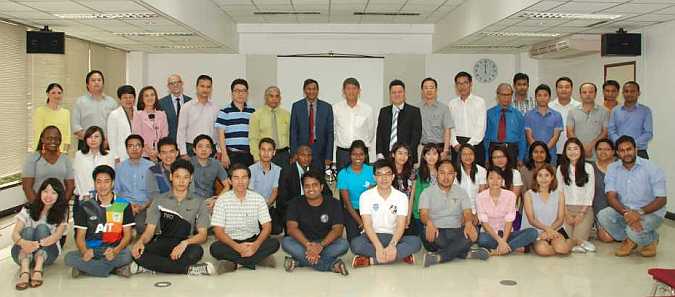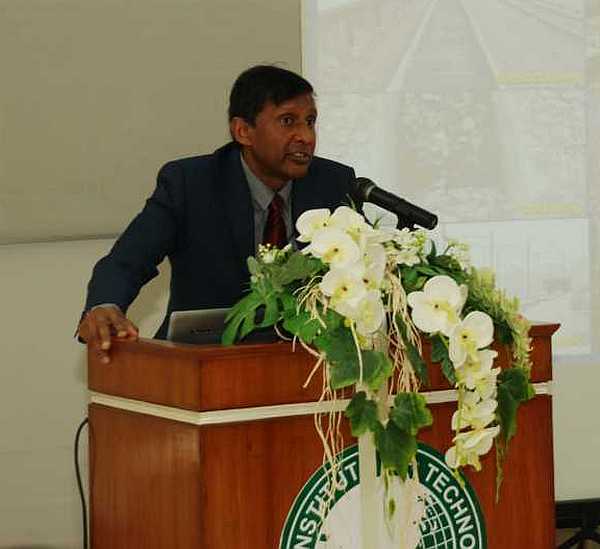Delivering a seminar on the topic "Advancement of Railway
Infrastructure: Higher Speeds and Greater Loads,” Prof. Indraratna, who
taught at AIT in the late 1980s and early 1990s, spoke about the latest
research in railway transport, emerging issues and challenges faced by
the transport sector, and highlighted the dynamics of high-speed
railways.
Prof. Indraratna said that Australia has some of the longest freight
trains in the world, leading to situations where the locomotive is in
one town, while the last train car is in another. This creates a
challenge since the same train may be commuting on differential railway
substructures at the same time. He added that modernization of railways
needs to cater to the consumer demand for higher train speeds, greater
traffic densities and increased axle loads for sustainable
productivity.
Stating that until 1990, the share of all modes of transport were
almost the same; but it was in the runup to the Sydney Olympics that
led to an upsurge in demand for railways. Further, the volume and
movement of freight is expected to double over the next 10 years, while
congestion and loss of productivity is expected to cost 30 billion
dollars in 2015.
Quoting from research conducted at the University of Wollongong, Prof.
Indraratna highlighted the advances made in preventing particle
breakage, confining lateral pressure, use of energy absorbing rubber
mats to prevent impact damage. and the use of recycled tyres into shock
mats.
The guest speaker was introduced by Prof. Sivanappan Kumar, Vice
President for Academic Affairs (VPAA), AIT, who complimented Prof.
Indraratna for his exemplary achievements.


